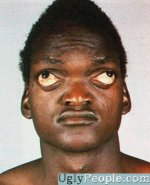You got it.............
If you had to make a shot for all the bananas with your gun which eye would you rather shot with? Maybe the slightly dominent one or I don't know how it would work with guns.
Joey,
I tend to be very weakly right eye dominant. I can work to strengthen that dominance when I need to and do for pistol competition. Oddly enough, I fight just as hard to do a better job taking in information with my left eye shooting benchrest.
When using the finger test, the finger often moves when I close either eye. I can also force dominance and move the finger back and forth without closing either eye.
One major merit I see to Gene's teachings as I understand them is that you do determine which eye you want dominant for a shot. Paying attention to which eye is dominant might be a huge help for people like myself. I actually think I have three forms of vision, right eye dominant, left eye dominant, and true balanced binocular vision with both eyes working equally. In theory I think I would prefer the last state but when I miss badly I think it is often because I don't recognize which state of vision I am using at the time. Choosing one in the preshot routine would probably help me a ton.
Hu
If you had to make a shot for all the bananas with your gun which eye would you rather shot with? Maybe the slightly dominent one or I don't know how it would work with guns.
